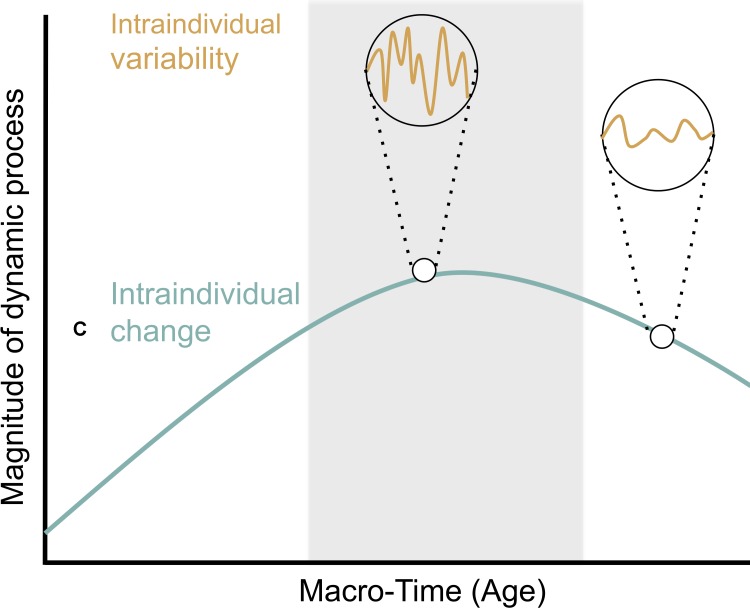FIGURE 1.
Intraindividual change and intraindividual variability (figure adapted from Ram and Gerstorf, 2009; with permission from the authors). Intraindividual change (green line) describes within-person change resulting from long-term processes over the course of years. Intraindividual variability (orange line) refers to changes occurring on relatively shorter timescales that are conceived of as fluctuations resulting from short-term processes over the course of seconds, minutes, days, and weeks. Differences between the two circles highlight that the extent of intraindividual variability may change with age. The adolescent period is highlighted by a gray background and is marked by a peak in the magnitude of the dynamic characteristic under consideration. This peak was chosen to reflect findings of increased risk-taking and sensation seeking during adolescence relative to childhood and adulthood (e.g., Burnett et al., 2010). Further, greater intraindividual variation is portrayed during adolescence relative to other periods. This reflects findings of greater variability in risk-taking in adolescents relative to children in recent work (e.g., McCormick and Telzer, 2017).

